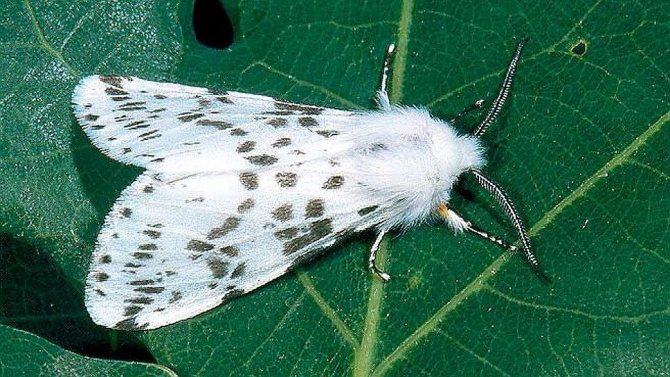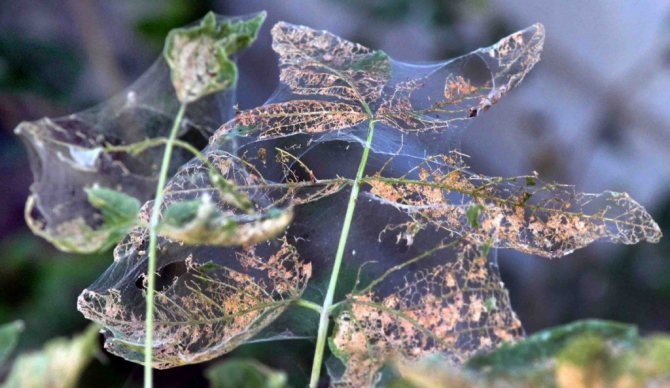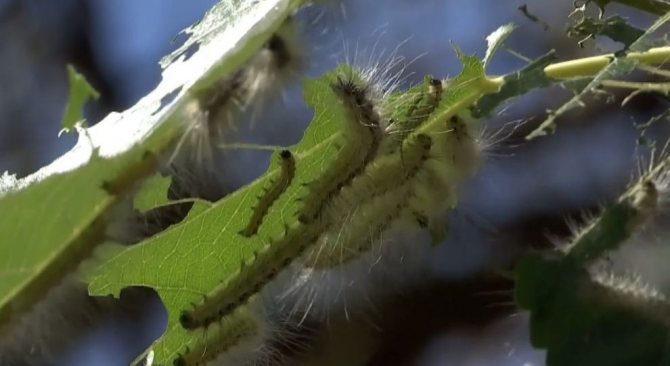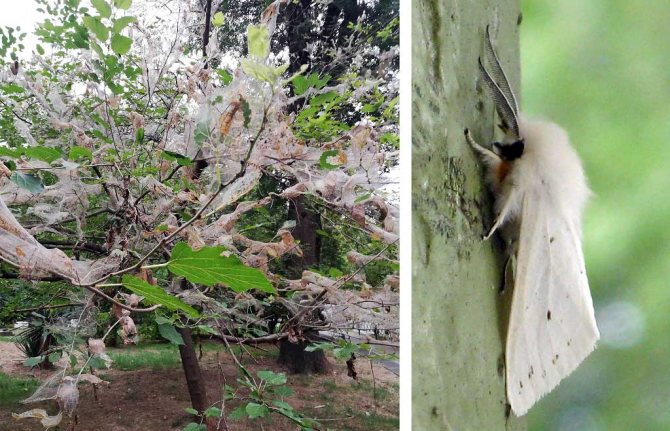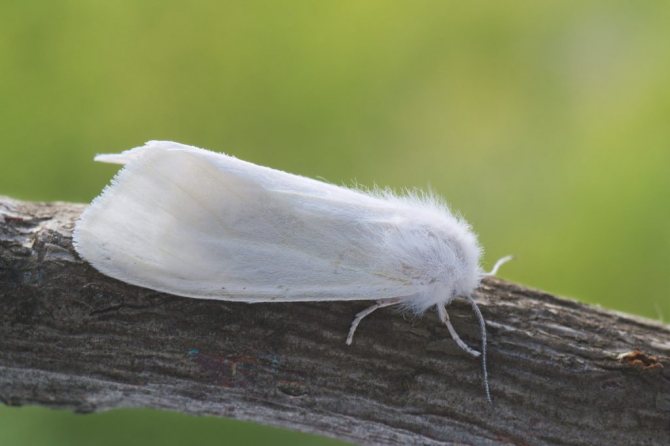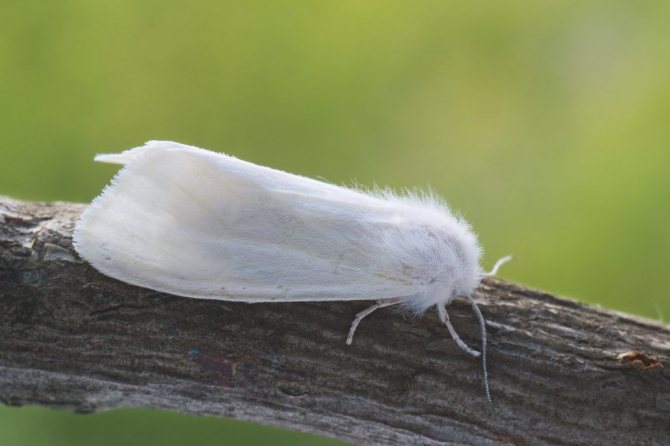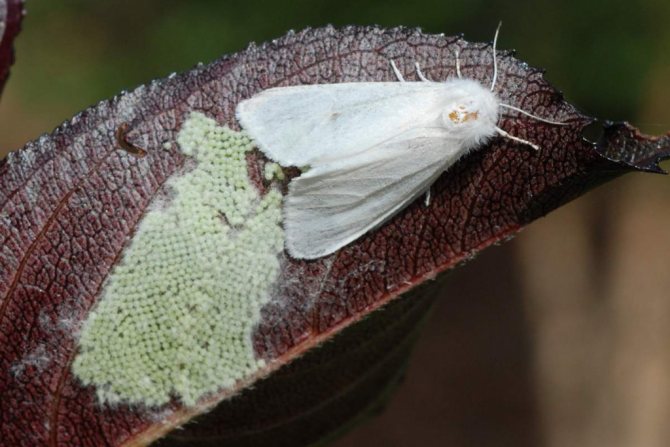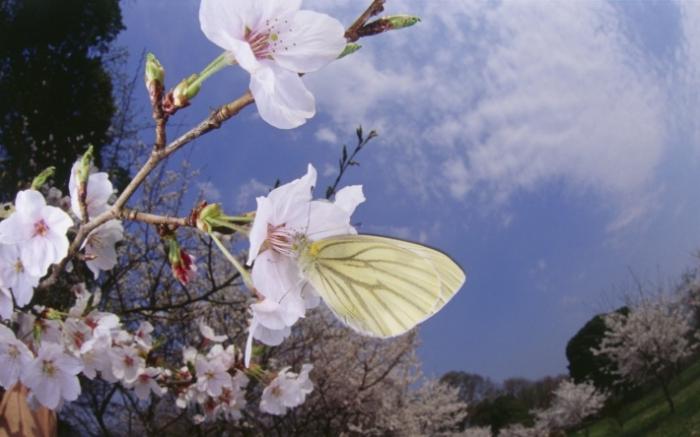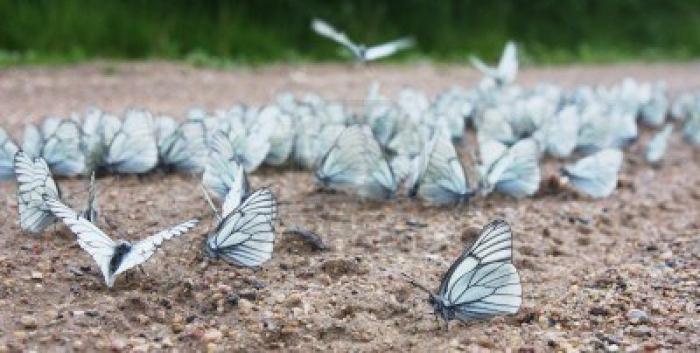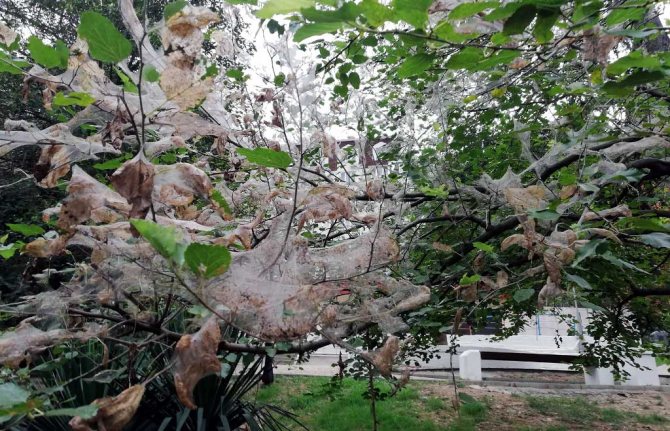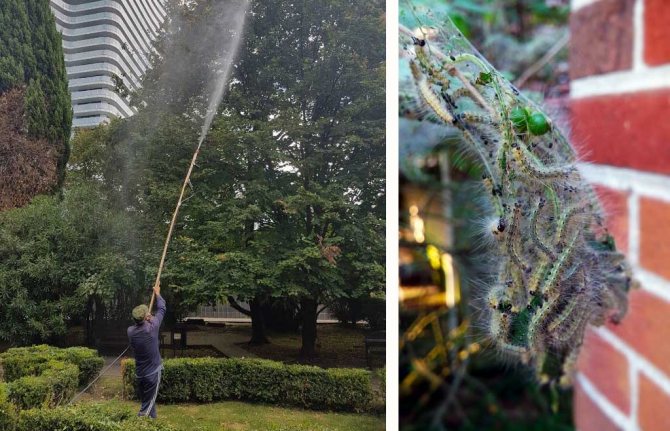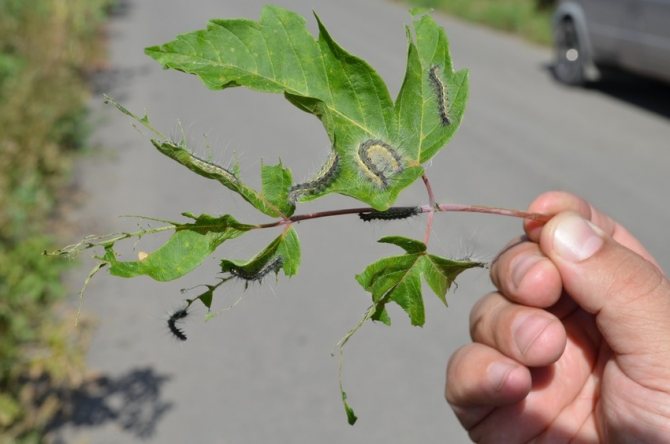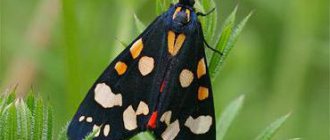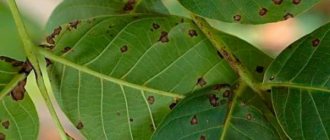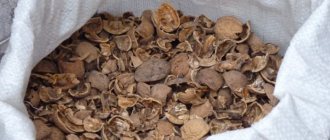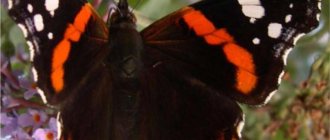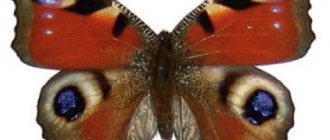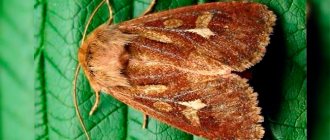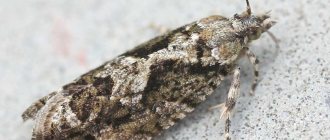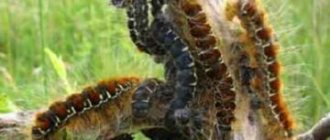Category: Houseplants Published: 23 February 2019 Updated: 01 October 2019
Summer is the time for the activity of such a dangerous pest as the American white butterfly. Probably everyone has seen trees and bushes that the American butterfly turned into continuous cocoons of cobwebs. If you do not help a plant occupied by an aggressive American in time, it will certainly die.
White American butterfly (Hyphantria cunea) - this is an exceptionally gluttonous pest, its "menu" includes more than two hundred different trees and shrubs, but mulberry is especially to the taste of these insects.
White American butterfly - description
These butterflies move at night very quickly and over long distances, so they have few natural enemies. The caterpillar of the white American butterfly is brown, velvety, with black spots all over its body, fluffy. Pest pupae overwinter in the bark of trees, in the stems of dry plants, under clods of earth, and even indoors! In a word, winters, even with severe frosts, are not terrible for this pest.
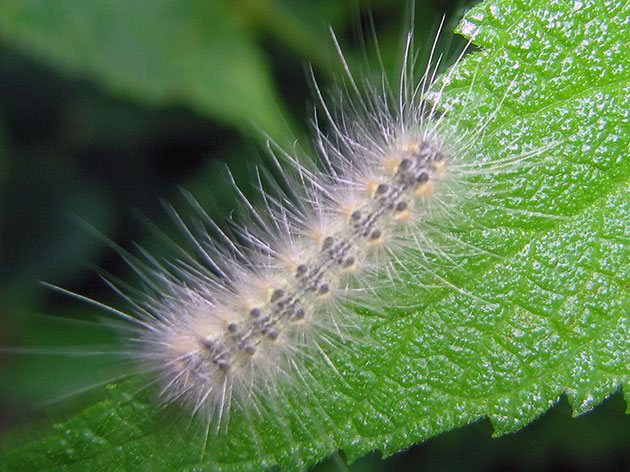
Butterflies appear in the spring, during the flowering period of fruit trees. In May-June, they actively lay eggs, and after a couple of weeks caterpillars appear from the eggs, which literally devour the deciduous part of the tree in just a few hours. Caterpillars live in colonies - these are the very "nests" of cobwebs that we see on trees affected by the pest. For 40, or even 50 days, caterpillars destroy everything in their path, and only then pupate. Already in July, the next generation of butterflies appears, the females of the second knee are even more fertile: one individual lays 2500 eggs! Caterpillars of the second generation eat trees until autumn.
- Moths: how to get rid of, how to deal with a pest (remedies)
Life cycle
The embryo in the egg, depending on the ambient temperature, develops from 6 to 15 days. During this time, a caterpillar is formed from it, waiting in the wings to go outside. Air humidity is an important factor for caterpillar hatching. If it drops to 50%, then the caterpillar dies, even before it is born. The same thing happens with it if the air temperature drops to +12 degrees.
In just a couple of hours after emerging from the egg, the caterpillars need food. They start eating leaves and at the same time begin to equip the nest for later life. In total, caterpillars develop at 8-11 instars. Up to 5 years of age, they live in a nest, the area of which can reach 1.5 m. Having matured, they crawl all over the tree. At this stage of development, future butterflies can be from 38 to 57 days. The timing is influenced by factors such as air temperature and the type of plant that the caterpillars feed on.
We recommend reading:
Conifers in landscape design
At temperatures over 22 degrees, development occurs faster, accelerates this process and the consumption of mulberry, walnut and maple leaves.
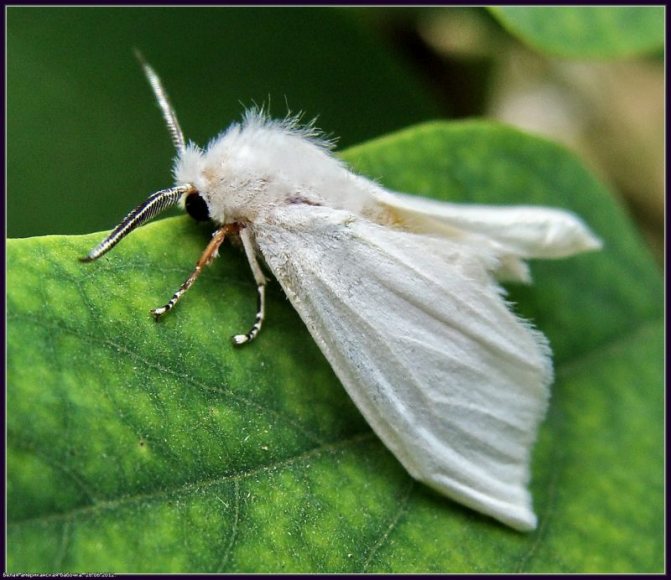

Before pupation, caterpillars actively seek out a warm, dry place to hide. They climb under the bark of trees, into dry leaves on the ground, into the soil. They stay in this form for up to 20 days, while about 15% remain in the pupal stage for a whole year.
Pupal butterflies appear at night, and are subsequently active only in the dark. They do not live long: males up to 4 days and no more than 11 - females.During this time, they manage to mate, after which the females of the first generation lay up to 1500 eggs, in the second generation - about 2500.
What harm is done
An interesting fact is that American white butterflies in the adult stage do not eat. Their oral apparatus is simply not developed. Their life energy is kept on the reserves that they made as caterpillars. So they just act as dangerous pests. Young caterpillars skeletonize leaves of many fruit trees, matured individuals gnaw roughly. Favorite treats include: apple, plum, mulberry, pear and others. In total, there are about 230 species of plants that serve them as food.
The caterpillars' eating of leaves leads to the weakening and even death of plants. With a large percentage of foliage damage, the yield of fruit trees decreases or completely disappears.
Pest control methods
If an American white butterfly is found on a tree or a group of trees, absolutely all plants within a radius of 100 m must be treated with insecticides. Individuals found at any stage of development should be immediately destroyed.
The use of chemicals is not always justified, therefore, it is possible to get rid of pests by mechanical means. For this, the trees are cleaned of peeled bark and burned. In small areas, the spider nests of caterpillars are cut and destroyed, and special trapping belts are used to catch those who have crawled to pupate in the ground.
We recommend reading:
Superphosphate - description, application
Since many American white moths come from infested areas in boxes of fruit and berries, careful screening of vehicles is an effective way to prevent their entry. If a dangerous insect is found, the entire cargo is disinfected.
Another method of controlling a butterfly is spraying with biological pesticides. Application to the nest of caterpillars of a preparation with a virus, which is specially designed to affect this insect, destroys about 30% of the individuals. The rest get sick and weak.
The use of the Chinese pupal entomoparasite deserves special attention. An insect called hoya develops in the body of the pupa of the American white butterfly, killing it. This method is effective in over 80% of cases.
To get rid of a harmful butterfly, you can use a simple folk method. To do this, you need to take several large barrels and place them under the trees every 10 cm. Then water is poured into them and rubber hoses, one and a half meters long, are hung around the edges. The caterpillars will crawl inside the hoses and become pupae in a few days. All that remains is to get them out of there and destroy them.
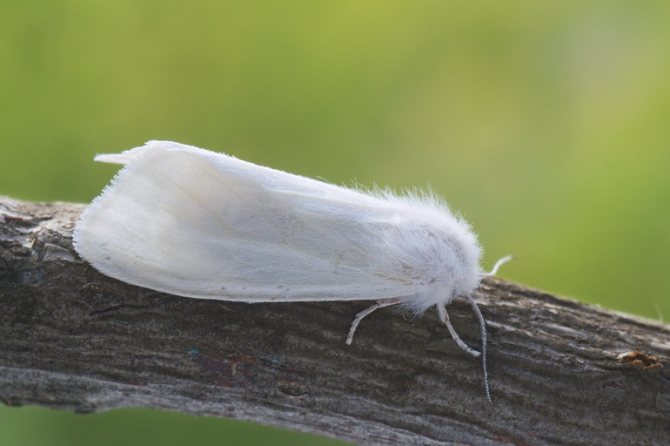

The American white butterfly poses a real threat to fruit trees, so it is imperative to fight it, not allowing it to spread over large areas. To do this, you need to regularly inspect the trees in your garden and, if a pest is found, immediately destroy it in any way possible.
655
Author of the publication
offline 3 months
How to deal with the white American butterfly
Destroy the leaves on which the butterfly has laid eggs. It is very easy to find such "incubator leaves": they darken and curl.
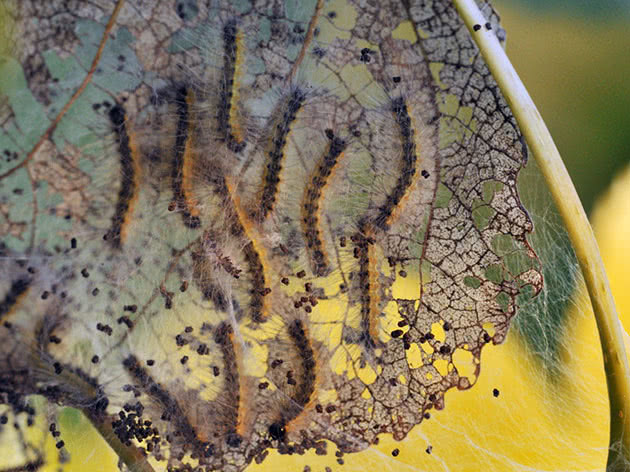

Caterpillars are best destroyed at night or after rain, when pests gather in groups.
If you decide to fight against the white American butterfly with chemicals, then here is a list of them: Chlorophos, Entobacterin, Sevin, Rogor S, Dursban 480, Karate 050EC, Pirinex 40.
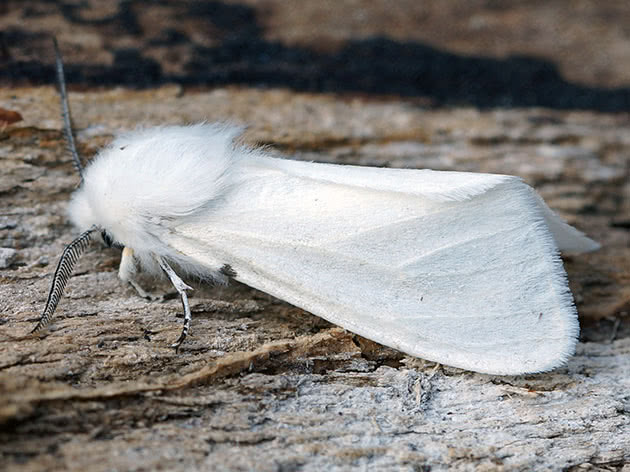

Ways to fight
For the destruction of the pest, it is extremely important to identify and destroy it in the first generation, since in the second - its number is almost twice as large, and accordingly the damage is colossal. Inspection of green spaces should be carried out at least once a week.
In the difficult fight against the American white butterfly, several methods are used:
- Mechanical - involves pruning and burning directly in place of branches with caterpillar nests. It is also necessary to clean trees from dry bark, whitewash them with lime, destroy dry weeds near plantations, dig up the soil in the autumn in order to get rid of butterfly pupae.
- Chemical - provides for the treatment with chemical preparations before the appearance of buds and flowering of fruit crops. For these purposes, insecticides Karate 050EC, Chlorofos, Sevin, Entobacterin, Dursban 480, Pirineks 40, as well as Rogor S.
- Biological - consists in the use of a virus, the causative agent of nuclear polyhedrosis and granulosis in this butterfly. When a drug with a virus is applied to the nest, about a third of the caterpillars die, the rest become infected and fall ill. Also surviving individuals infect the rest. An infected female produces infected offspring.
The use of biological products is also effective. These are special bacteria, pathogens that affect caterpillars in a certain way. They, of course, do not burn everything out like chemicals, some of the pests die, and the rest survives.
But these drugs are absolutely harmless to the environment, birds. Moreover, they have a beneficial effect on plantings, increasing their immunity. These are agents such as dendrobacillin, bitoxibacillin, lepidocid.
Also, in some countries, entomophages are used to kill butterflies at various stages of their development. Entomophages are insects that eat other insects and their larvae.
The destroyers of butterfly eggs are lacewing, scorpionfish, common pinch, garden ground beetle, as well as a brownish hunter bug, a big odorous one, and a small bronze one.
Pupae are parasitized by psychophagus and Chinese chalcid. Basically, these parasitoids are bred artificially, since in many countries this type of butterfly is not aboriginal and therefore it has few enemies, which contributes to its rapid spread across different countries of the world.
The safest method for the destruction of an American pest is based on the use of biological products and living beings.
Chrysiridia rhipheus (Urania Madagascar)
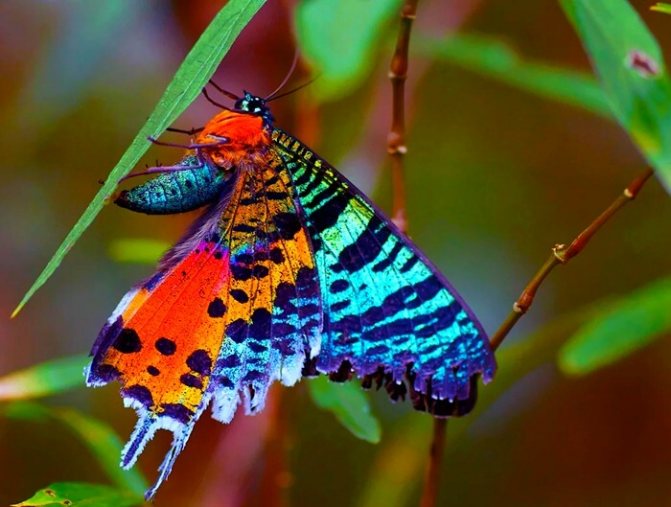

The birthplace of this amazing moth with luxurious flowers is, you guessed it, Madagascar. This insect stands out not only for its beauty, but also for its large size. Its wings reach 7-9 centimeters in span. The hind wings have small tails, which gives the butterfly an unusual look.
Like most other colorful butterflies, Urania Madagascar is poisonous.
Harm to plants
Due to its large numbers, strong fertility, polyphagia and the development of at least two generations per season, the American white butterfly is a very dangerous pest.


horticultural crops. The second and subsequent generations do the most tangible harm.
Caterpillars eat leaves of wild rose, mulberry, walnut, apple, plum, bird cherry, quince, apricot, pear, peach - a total of more than 200 varieties of herbaceous, woody and shrub plants.
In leaf blades, they eat out all the contents between the veins. In addition, the leaves are used to make a hair nest.
With a large number of individuals in the population, a group can leave an adult tree completely without leaves. As a result of their activity, the plant is weakened, reducing fruiting and winter hardiness.
Insect description
Eggs
They are large enough, reach 0.5-0.8 mm in diameter, have an oval shape. The color is initially yellow or green with golden and blue hues; as the embryo grows, it is replaced by an unpleasant gray. They are located in numerous groups from 100 to 600 eggs. The clutch is covered with whitish hairs taken from the mother's abdomen.The full development cycle is from 9 to 15 days.
Caterpillar
Passes through 7-8 ages. The larva of the first instar has a tuberous green body covered with hairs and bristles. The next three ages are colored pale yellow
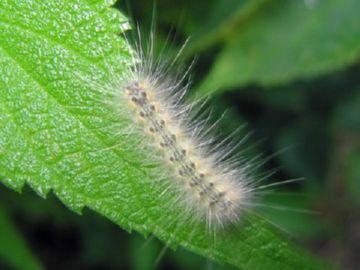

a color that darkens after molting.
The oldest caterpillar is light brown with black dots and spots, and is lemon-colored on the sides, running in a wide stripe. There are orange specks on it. The body has many hairs of different lengths. The trunk can be up to 35 mm.
The larvae of the fourth molt settle in large groups, which can wrap up entire adult trees in cobwebs. Caterpillars of all ages have a life cycle of 40 to 45 days.
Chrysalis
It is located in a loose hair cocoon, the color of which gradually turns from light yellow to dark brown. The pupa length can vary from 8 to 15 mm. The pupa of the first generation develops for about two weeks.
Imago
Very beautiful snow-white butterfly. Sometimes on the wings there is a pattern of brown or black dots. The abdomen is covered with many white hairs, which is why it looks fluffy.
Sexual differences are manifested in the length of the wingspan (in females 26–36 mm, in males up to 30 mm) and in the structure of the antennae. The female has a filamentous whisker, the male has a comb.
Females with eggs inside, the abdomen turns green.
Is it possible to use folk methods
The answer is unambiguous, not only possible, but also necessary. After all, the methods of dealing with butterfly caterpillars, invented by the people, are safe and no less effective than the traditional, but more laborious ones. While such popular methods of painstaking war with pests are known:
- In the first case, ordinary metal barrels or other containers with water are used.that are placed near the affected tree. Pieces of an opaque hose 1-1.5 meters long are attached to the edges of the container. The bottom line is that in the heat, the caterpillars climb the barrel, and go back down through the hose, where, feeling like in a secluded place, pupate. Then just wash them out with water and dispose of or burn them along with a piece of hose.
- The second method is based on the love of butterfly individuals for beer and kvass. Half of one of these drinks is poured into cans or cut plastic bottles. They are hung on a tree so that you can get them and take them off. These pests creep onto the treat. Then the container is removed, the caterpillars are caught and destroyed.
- One more variant of the struggle is still possible. After the rain has passed, the caterpillars gather in heaps in cozy places. Therefore, they can organize such a place by putting unnecessary pieces of fabric between the tree branches. And when they are all there, take these rags and destroy.
- For the complete destruction of the American white butterfly, it is advisable to use in a complex all known methods for its extermination.
Butterfly life
The American butterfly waits out the winter in the form of a pupa, finding shelter from the seasonal weather. It climbs into the crevices of houses, into cracks in the bark of trees, into breaks in branches and other suitable corners. The insect will get out of its shelter only in the spring, when the apple trees begin to lead. The main activity of butterflies occurs in May and June. Of the time of day, they prefer night, starting to fly after sunset over the horizon.
After mating, the females lay their eggs on the back of the leaves. In just her life, she can lay 1,500 eggs. Caterpillars appear 2-3 weeks after laying the clutch. They will pupate for 30 to 50 days while eating the leaves of the plants.
The duration of the developmental phases of the American butterfly directly depends on climatic conditions. The optimum air temperature is 20–25 ° C and humidity 70–80%.
At the end of July and August, butterflies of the "summer generation" are born, which are very active in the morning and at night.They differ from the "spring" ones in increased fertility: females lay 2500 eggs, of which caterpillars appear in September. Pupae remain in the shelter for the winter.
The American white butterfly is characterized by two generations per year.
Butterflies-pests of plants and cereals
Colorful winged insects delight everyone. They pollinate unisexual plants, taking second place (after bees) in the amount of pollen transferred. With the help of long proboscis, they penetrate into low-lying flower nectaries. Caterpillars of decorative butterflies (swallowtail, oleander and common hawk moth) feed on green weeds and themselves are food for birds living in gardens.
However, some of the garden pest butterflies spoil 20% to 80% of the crop. You can tell them apart by their appearance. They are monochrome or black and white. And getting rid of butterflies in the garden is not easy.
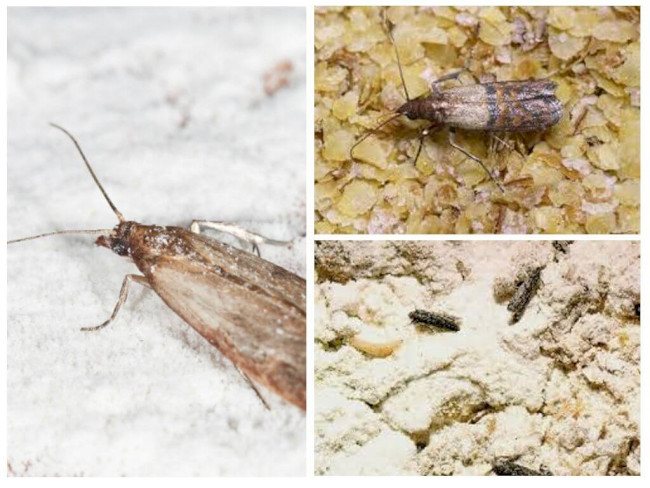

How to get rid of the American white butterfly
The optimal timing of the fight against the American white butterfly is the period when caterpillars of 1-3 instars appear - June-August.
To eliminate foci and reduce the number of pests, it is necessary to carry out agrotechnical measures: collection and destruction of caterpillars and egg-laying. The nests of the caterpillars, together with the leaves, are carefully cut off and cut, being careful not to damage the branches themselves.
On damaged trees, dead bark is removed, tree trunks are coated with lime. In household plots, trapping belts made of cardboard or corrugated paper should be used.
Before pupation of caterpillars, these belts are removed and burned. But if there is too much pest, spraying with any of the permitted pesticides from leaf-eating insects will help: Fastak, Decis-pro, Bi-58 new, Fury (ram), Karate Zeon, Zolon, Arrivo. Sumi-alpha
... These drugs also affect other leaf-eating caterpillars (leafworm, moth, hawthorn).
Morpho menelaus (blue morpho Menelaus)
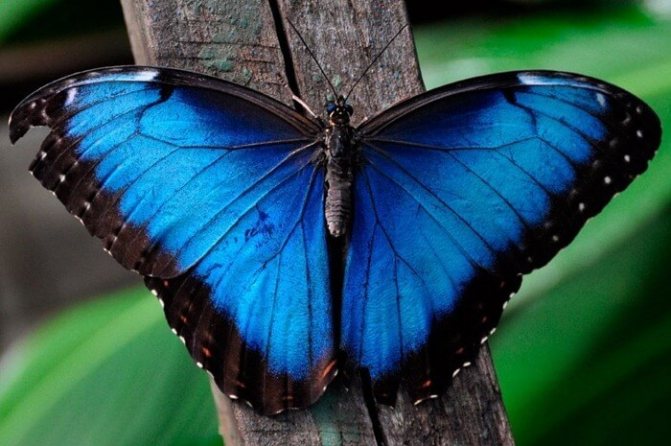

One of the most beautiful butterflies in the world impresses with its wings that reach 12 centimeters in span. But those who love to explore butterflies and find out more than what is shown in the photographs know that the gorgeous blue of blue morpho is just a play of light. While the "wrong side" of the wings is colored brown and decorated with "eyes" of different sizes. This helps the insect to camouflage and hide from predators such as birds, frogs and lizards.


Some Amazonian tribes consider this butterfly a sacred messenger of Heaven, which can convey the desires of people to the gods.
Argema mittrei (Madagascar comet)
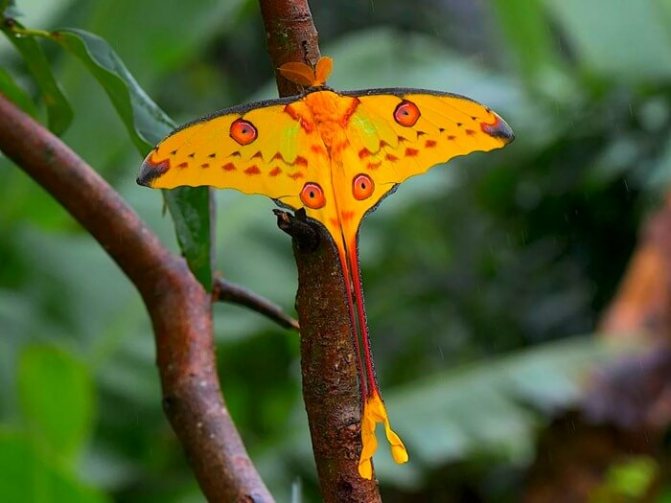

Even if you do not agree that this is the most beautiful butterfly in the world, you will surely admit that it is the longest. Indeed, no other butterfly has such a luxurious tail, which reaches a length of 16 centimeters.
Each wing is the size of an adult's palm and is decorated with beautiful "eyes". And it is not surprising, because the Madagascar comet belongs to the family of peacock eyes.
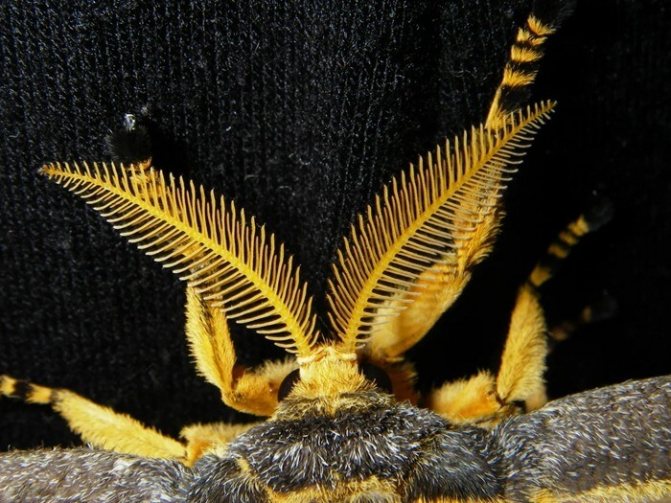

These butterflies eat nothing at all and live off the nutrients accumulated in the caterpillar stage. Therefore, their flight is beautiful, but very short-lived - 1-3 days.
Papilio palinurus (Sailboat Palinur)
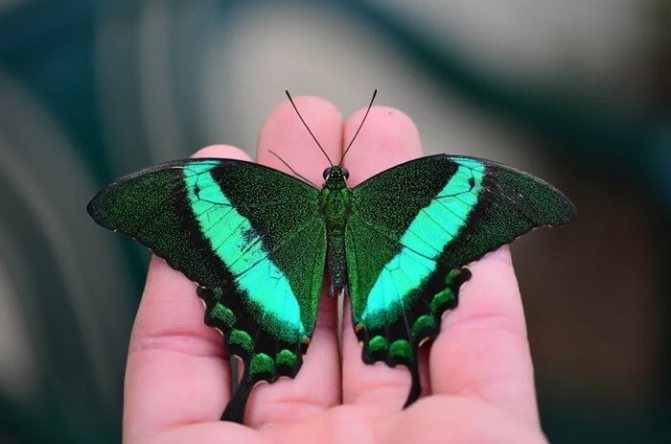

This butterfly is part of a large family of sailfish butterflies of 550 different species around the world. The sailboat Palinur, also known as the emerald swallowtail and the peacock butterfly, is one of the largest and brightest butterflies in the world.
These wonderful winged creatures are commonly found in Southeast Asia and have velvety green-streaked wings. Such an interesting color allows the emerald swallowtail to live quietly its short life (up to 10 days), merging with the foliage.
Folk remedies for fighting butterflies
You can also destroy or scare away pest butterflies of the garden with the help of harmless homemade products.
| Means | Mode of application |
| Hemp, calendula, thyme | Plants are planted under fruit trees; butterflies are frightened off by a strong smell. |
| Salt and makhorka composition | Fruit trees are sprayed with an aqueous solution (800 g of sodium chloride and 400 g of makhorka are combined with 10 liters of water, infused for a day). |
| Yarrow decoction | Dry grass (250 g) or fresh plants (200 g) are poured with 2 liters of water, after boiling, cook for another 5 minutes, cool and strain. Add water to 10 liters and spray. |
| Infusion of dry calendula and garlic seeds | Finely chop or twist 100 g of garlic and stir in 4 cups of flower seeds. For 3 hours, infuse the mixture in a bucket of cold water. Spray plants after sunset. Stop processing with the mixture a month before harvesting. |
| Wormwood decoction and infusion | Cut 3 kg of fresh (600 g dry) herbs, infuse in 10 liters of cold water for 24 hours, then boil for another 30 minutes. Grind 5 cups of fresh herbs, pour 10 liters of boiling water and leave for 3 hours. The last treatment of plants with preparations with wormwood is 1 month before harvest. |

